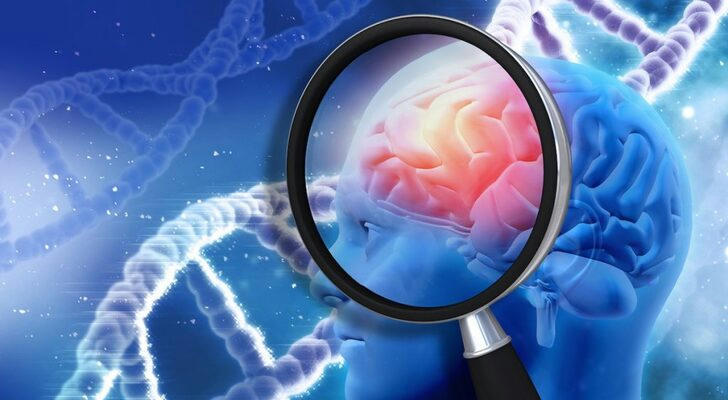Comprehensive Guide to Understanding Migraines: All You Need to Know

Migraines are a common yet debilitating type of headache that affects millions of people worldwide. They are often characterized by intense, throbbing pain and accompanied by symptoms such as sensitivity to light and sound, nausea, and vomiting. Despite their prevalence, migraines remain poorly understood, and many individuals struggle to manage their symptoms effectively. This guide will explore everything you need to know about migraines, including their causes, symptoms, treatments, and prevention strategies.
What Are Migraines and What Causes Them?
A migraine is more than just a headache—it’s a complex neurological condition that can cause severe, pulsating pain, often on one side of the head. Migraines are frequently accompanied by nausea, vomiting, and extreme sensitivity to light and sound. These symptoms can last for hours or even days, making it difficult for sufferers to carry out daily activities.
While the exact cause of migraines is still being studied, researchers believe a combination of genetic and environmental factors plays a role. Changes in brainstem activity and imbalances in neurotransmitters like serotonin, which regulates pain signals, may also contribute. Additionally, recent research on the role of calcitonin gene-related peptide (CGRP) in migraines offers hope for better treatments in the future.
Common Migraine Triggers
Migraines can be triggered by a variety of factors, which vary from person to person. Identifying and avoiding these triggers can help reduce the frequency and severity of migraine attacks. Common triggers include:
- Medications: Certain drugs, such as oral contraceptives and vasodilators like nitroglycerin, can trigger migraines in some individuals.
- Physical Factors: Intense physical exertion or even sexual activity can sometimes lead to migraines.
- Food Additives: Additives like aspartame and monosodium glutamate (MSG) are known to trigger migraines in some people.
- Weather Changes: Shifts in temperature or barometric pressure can act as migraine triggers.
- Hormonal Fluctuations: Many women experience migraines linked to changes in estrogen levels during menstruation, pregnancy, or menopause.
- Dietary Choices: Skipping meals, consuming aged cheeses, or eating salty, processed foods can trigger migraines.
- Beverages: Alcohol (especially wine) and excessive caffeine consumption are common migraine triggers.
- Stress: High levels of stress, whether from work or personal life, can lead to migraines.
- Sensory Stimuli: Bright or flashing lights, loud sounds, and strong smells like perfume or paint thinner can trigger migraines.
- Sleep Disruptions: Changes in sleep patterns, whether too much or too little sleep, can provoke migraines.
Symptoms of Migraines
Migraines often progress through four stages, though not everyone experiences all of them. These stages include:
1. Prodrome
This phase occurs one or two days before the migraine and may include subtle warning signs such as:
- Stiff neck
- Mood changes (e.g., depression or euphoria)
- Frequent yawning
- Constipation or diarrhea
- Food cravings
- Increased urination
2. Aura
Some people experience an "aura" before or during a migraine. Auras are neurological symptoms that can last up to an hour and may include:
- Visual disturbances (e.g., seeing flashes of light, zigzag patterns, or blind spots)
- Tingling or numbness in the face or limbs
- Difficulty speaking
- Temporary loss of vision
3. Attack
The migraine attack itself can last from a few hours to several days. Symptoms during this phase may include:
- Throbbing or pulsating pain, usually on one side of the head
- Nausea and vomiting
- Sensitivity to light, sound, touch, or smell
4. Post-drome
After the migraine subsides, many people feel drained, confused, or exhausted for up to a day. Some may even feel unusually elated.

Risk Factors for Migraines
Several factors can increase your likelihood of experiencing migraines, including:
- Hormonal Changes: Women are more likely to experience migraines due to hormonal fluctuations during menstruation, pregnancy, or menopause.
- Genetics: A family history of migraines increases your risk.
- Age: Migraines often begin in adolescence and peak during early adulthood, though they can occur at any age.
- Sex: Women are three times more likely than men to suffer from migraines.
Possible Complications of Migraines
One of the most significant risks associated with migraines is medication-overuse headaches. Overusing pain relievers like aspirin, acetaminophen, or triptans can lead to a cycle where the medications stop working and instead trigger more headaches. To avoid this, it’s essential to use medications as directed and consult a healthcare provider for long-term management strategies.
How to Manage Migraines Effectively
Understanding your migraine triggers, risk factors, and treatment options is key to managing this condition. Here are some steps you can take:
- Track Your Migraines: Keep a diary to identify patterns and triggers.
- Work with a Healthcare Provider: A doctor can help you develop a personalized treatment plan.
- Lifestyle Adjustments: Maintain a regular sleep schedule, eat balanced meals, and manage stress.
- Medications: Use preventive or acute treatments as prescribed by your doctor.
- Avoid Triggers: Once you identify your triggers, take steps to minimize exposure.
Decode Your Migraine Patterns Today
Migraines can be challenging to live with, but understanding their causes, symptoms, and triggers can empower you to take control. By working with your healthcare provider and making informed lifestyle choices, you can reduce the frequency and severity of migraines and improve your quality of life.
Remember, knowledge is power. The more you understand about migraines, the better equipped you’ll be to manage them. Start decoding your migraine patterns today and take the first step toward a healthier, headache-free life.

